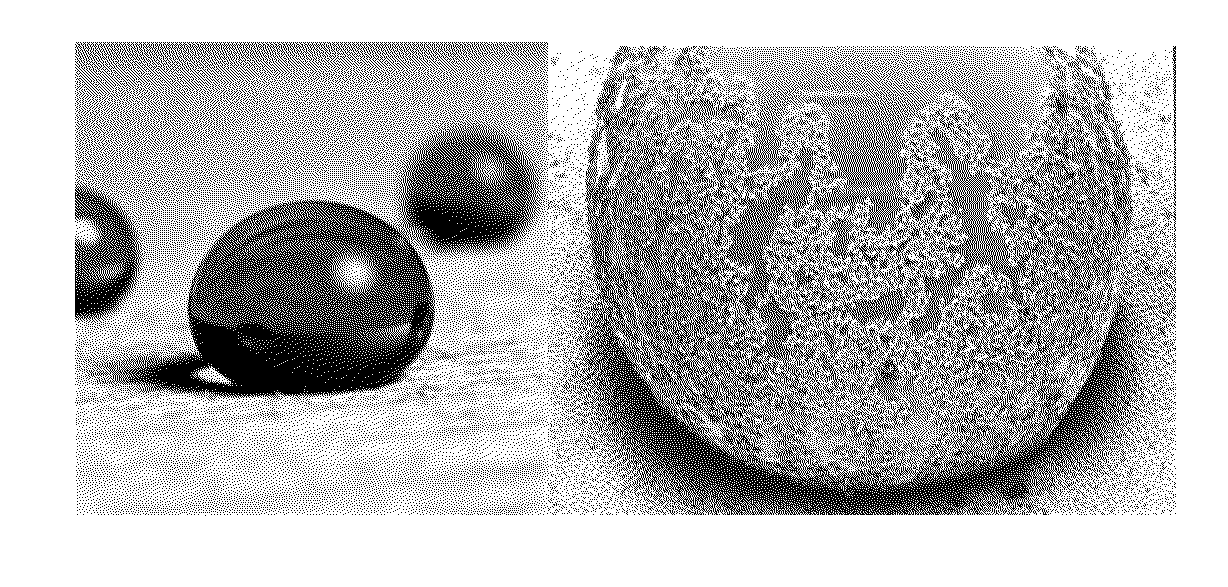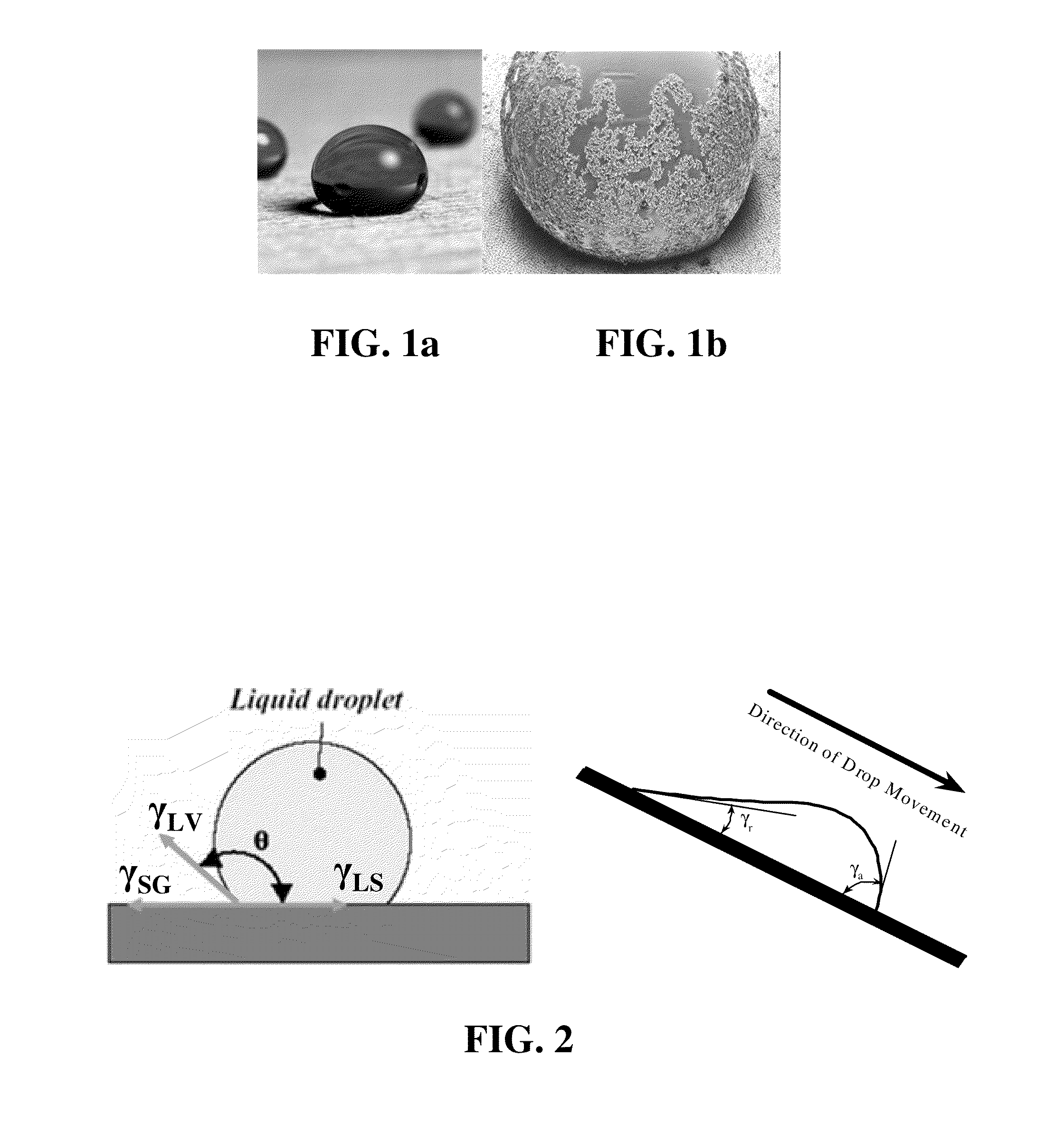Patterning Of Surfaces To Control The Storage, Mobility And Transport Of Liquids For Microfluidic Applications
a technology of microfluidics and surfaces, applied in the field of superhydrophobic surfaces, can solve the problems of limited application of lops, unsuitable devices for low-tech applications like biomedical diagnostics, and inability to perform multiplex analysis
- Summary
- Abstract
- Description
- Claims
- Application Information
AI Technical Summary
Benefits of technology
Problems solved by technology
Method used
Image
Examples
example 1
Fabrication of “Roll-off” and “Sticky” Superhydrophobic Cellulose Surfaces via Plasma Processing
[0180]In this example, superhydrophobicity on cellulose paper was obtained by domain-selective etching of amorphous portions of the cellulose in an oxygen plasma and subsequently coating the etched surface with a thin fluorocarbon film deposited via plasma-enhanced chemical vapor deposition using pentafluoroethane (PFE) as a precursor. Variation of plasma treatment yielded two types of superhydrophobicity: “roll-off” (CA of 166.7°±0.9°; CA hysteresis of 3.4°±0.1°) and “sticky” (CA of 144.8°±5.7°; CA hysteresis of 79.1°±15.8°) near superhydrophobicity. The nanometer scale roughness obtained by delineating the internal roughness of each fiber and the micrometer scale roughness which is inherent to a cellulose paper surface are robust when compared to roughened structures created by traditional polymer grafting, nanoparticle deposition, or other artificial means.
[0181]The materials used for ...
example 2
Tunability of the Adhesion of Water Drops on a Superhydrophobic Paper Surface via Selective Plasma Etching
[0199]Described in this example is the fabrication of a sticky superhydrophobic paper surface with extremely high contact angle hysteresis: advancing contact angle of about 150° (superhydrophobic) and receding contact angle of about 10° (superhydrophilic). In addition, described is the controlled tunability of the contact angle hysteresis from about 149.8°±5.8° to about 3.5°±1.1°, while maintaining superhydrophobicity, as defined through an advancing contact angle above 150°. The hysteresis was tuned through the controlled fabrication of nano-scale features on the paper fibers via selective plasma etching. The variations in contact angle hysteresis were attributed to a transition of the liquid-surface interaction from a Wenzel state to a Cassie state on the nano-scale, while maintaining a Cassie state on the micro-scale.
[0200]Commercial copy paper contains filler particles and o...
example 3
Design of Superhydrophobic Paper / Cellulose Surfaces via Plasma Enhanced Etching and Deposition
[0232]In this example, superhydrophobicity was achieved on different paper surfaces via plasma enhanced etching and film deposition. The effects of fiber types and paper making parameters on the superhydrophobic behavior were studied. Achievement of superhydrophobic behavior depended on the formation of nano-scale features on the paper fibers established by selective etching of the amorphous domains in cellulose. Despite different fiber types and paper making processes, it was found that superhydrophobicity can be attained provided that plasma etching can occur on the fiber surface to create nano-scale features. Plasma processing conditions that allow the design of superhydrophobic paper or cellulose surfaces with specific adhesion properties will be described in this example. The significance of water drop volume on contact angle measurements and thus on characterization and analysis of su...
PUM
| Property | Measurement | Unit |
|---|---|---|
| contact angle | aaaaa | aaaaa |
| contact angle | aaaaa | aaaaa |
| contact angle | aaaaa | aaaaa |
Abstract
Description
Claims
Application Information
 Login to View More
Login to View More - R&D
- Intellectual Property
- Life Sciences
- Materials
- Tech Scout
- Unparalleled Data Quality
- Higher Quality Content
- 60% Fewer Hallucinations
Browse by: Latest US Patents, China's latest patents, Technical Efficacy Thesaurus, Application Domain, Technology Topic, Popular Technical Reports.
© 2025 PatSnap. All rights reserved.Legal|Privacy policy|Modern Slavery Act Transparency Statement|Sitemap|About US| Contact US: help@patsnap.com



